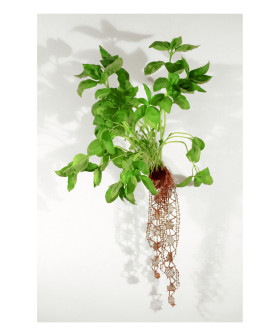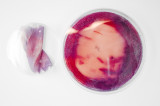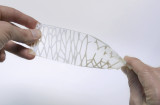To biofacture textiles
Biolace

Carole Collet
‘Biolace’ is located in 2050, in a future where all grown food is ‘enhanced’ and where sustainable manufacturing is compulsory for an overpopulated planet. ‘Biolace’ proposes to use synthetic biology as an engineering technology to reprogram plants into multi-purpose factories. Imagine hydroponic organic greenhouses, where new species of plants would produce ‘augmented’ food at the same time as growing fabrics from their roots. Plants become living machines, simply needing sun and water to be operational. In such a scenario, we would harvest fruits and fabrics at the same time from the same plants.
Plants become living machines, simply needing sun and water to be operational.
‘Biolace’ is a series of four fictional hyper-engineered plants: Strawberry Noir, Basil n 5, Tomato Factor 60, and GoldNano Spinach, all inspired by current and emerging research in the field of living and hybrid technologies. These plants could exist in a few decades, should we choose to pursue the alternative genetic manufacturing model that synthetic biology promises. The aim of this project is to bring to light the potential of emerging living technologies and to questions the pros and cons of such extreme genetic engineering. Could biological engineering promote a new kind of sustainable textile manufacturing, less reliant on chemicals and less energy-hungry than our current models of production? I believe we can question our present choices by projecting into the future and by anticipating on the potential of new emerging technologies. Would you eat a vitamin-rich black strawberry from a plant that has also produced your little black dress?
Biolace, Design and Biofacture, Horizon 2050 (english version) from carole collet on Vimeo.



